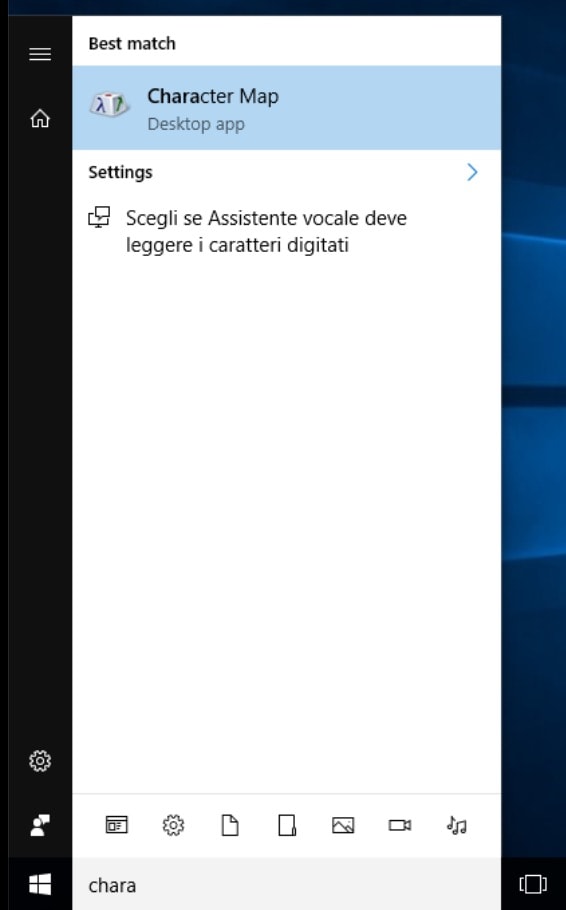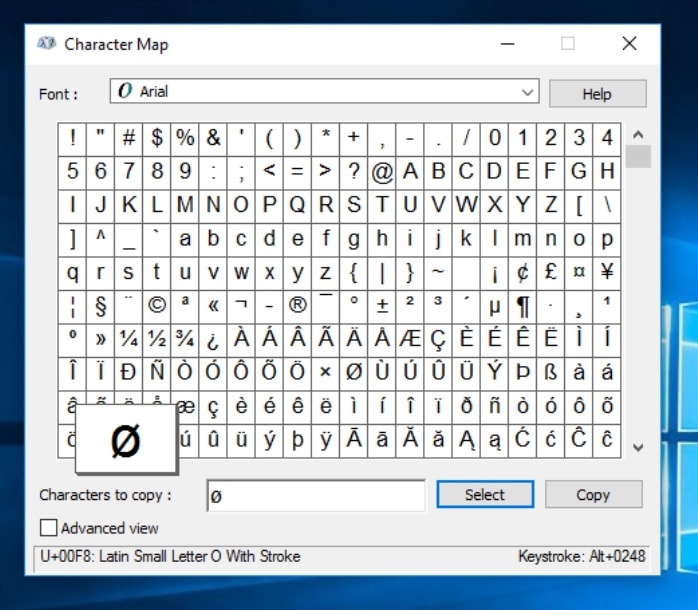The symbol representing the diameter is not directly represented on the US/International keyboard. There are however some situations where you may need to type this symbol.
It probably happens once in a while, but when you need it, is great frustration and a waste of time not knowing how to get it.
I needed it, so I looked for a solution, and here it is for you! Keep reading and you’ll know more about this special character and how to type it on a Windows, Mac, or Linux computer.

Where does the diameter symbol come from?
This symbol is a bit complicated to explain, as there are some similar ones, and they can be mixed easily.
There are two very similar characters: the diameter, and the Danish/Norwegian character Aptang.
When talking about computers and fonts, as we can read on Wikipedia, often the Aptang is a better alternative to the real diameter character as many fonts don’t include the last one.
If we analyze this keyboard, which has a Danish layout, we will see that, near the L letter, we can find the Aptang character. This will be our reference.

In the Danish language, this character comes from the ligature of the diphthong oe, where the horizontal line of the e character blends into the o, generating a single character.
How do I type the diameter sign?
Now that we know where this character comes from, let’s get back to our need for a way to type it on a standard US/International keyboard, where we apparently can’t find it anywhere.
I’ll show you more than one way to do it, on various keyboard sizes and under various operating systems. Sometimes we’ll discuss the “real” diameter symbol, sometimes we’ll use the Danish letter.
In my opinion, in many cases the Danish letter can be easier to obtain, is supported by more fonts, and it doesn’t make a lot of difference in the final result. It’s up to you to choose which method to use and which character, but at least for “informal” and not technical writing I think the Danish character is an easier way to avoid problems down the road.
Using the diameter symbol alt code on an extended keyboard
If you have an extended full-size keyboard (the one with the keypad) and you’re on windows, probably the best way to obtain a special character is by using the alt code assigned to that character.
In practice, you need to press the Alt key and insert a number on the numeric keypad on the right of your keyboard while you keep the Alt key pressed. Then you release the alt key, and the character appears.
Now that we know how to type special characters with the Alt key, let’s see what’s the diameter symbol code we should insert on the numeric keypad. There’s more than one, to represent the Danish and the diameter character in various sizes. I’ll show you a couple so you can choose the one you need.
ø - <Alt>+0248 - diameter symbol lowercase
Ø - <Alt>+0216 - diameter symbol uppercase
Ø - <Alt>+157
ø - <Alt>+155According to this alt codes site, the alt code for the diameter character (not the Danish letter) should be <Alt>+8960, but I had no luck with either 8960 or 2300, that’s shown as the Unicode number.
Unfortunately, the Alt codes work only on full-size keyboards with a numeric keypad, you can’t use the number keys you find above the letter keys on your laptop keyboard. So this method can’t be used on compact keyboards like the Logitech MX keys mini or most laptop keyboards.
Copy the symbol of diameter from another text
It can be a stupid solution at first sight, but if you need to type it only once and you’re already here, the fastest method can be the copy-paste method. Just copy and paste from below to your document.
ø - Symbol in lowercase
Ø - Symbol in uppercaseIf you can, you can paste the character without formatting (usually you can find this option in the “paste special” section, or with <Ctrl>+<Shift>+v.
If you need to type the diameter frequently, it could be a waste of time to come back to this page every time, so keep reading for other methods.
Insert the diameter symbol from the character map
Another great resource when dealing with unusual symbols in windows is using the “character map method”.
You can use the windows character map to get almost any character included in your font, it’s the library of symbols available on every font you have installed on your system. From there you can also copy and paste the character you need.
To do it, just follow this procedure:
- Open the windows menu.
- Start typing character map until the character map menu item shows up.
- Press enter or click on the menu item.

- The “Character map” application windows should show up.
- Now just find the right character you want to insert into your text and double click on it.
- This will add the character to the “Characters to copy” section.
- Now you can click on the “Copy” button and then paste the character where you need it.

As an additional tip, if you note on the lower-right corner of the character map window, the alt code for the selected character should show up, so you can use that next time if you want.
Using an external keyboard
The fastest method if you need to insert the diameter character a lot is using the alt code method, but this can be a problem if you have a laptop with a compact keyboard, while it’s a lot easier if you have a standard keyboard.
If you’re going to use this symbol a lot, maybe for work, you can probably think about purchasing an external full size keyboard. You can connect it to your laptop when you need it and speed up your work by not using the slower character map method.
In this case, I can suggest going for a Logitech keyboard, as it’s a respectable brand, and the quality is good. Logitech produces keyboards for almost every budget, from the economic basic Logitech K120, to the more advanced office keyboard, the Logitech MX Keys, or the more advanced and expensive gaming keyboards.
You can find a good list at this link.
Change the configured keyboard layouts to add the Danish one
Another good alternative if you’re forced to work on a laptop with a compact keyboard, is to change the keyboard layout setting on your computer.
In this way, you can configure the Danish/Norwegian layout, and have a keyboard shortcut to insert the character.
In windows, you can add a keyboard layout, and set the operating system to show an icon in the system tray to get a dialog box to switch between the configured layout. In this way, you can use your standard one, easily switch to the Danish layout, hit the ‘ key to get the diameter, and then get back to your layout.
There’s also a shortcut in windows to switch between the configured languages, it’s <Alt> + <Shift>.
How to type the diameter symbol on a mac
If you have a mac, it’s a lot simpler, and you don’t have to mess with other applications or external keyboards.
Apple simplified the life of users this time, providing a keyboard shortcut, so you have only to remember it and you can use it as many times as you want.
To make the diameter symbol on a mac, you just have to type the right keyboard shortcut, no matter if you have a laptop, a compact keyboard, or an external one. You just have to type <Alt/Option>+o (the o character, not the 0 number).
This is the shortcut for the Danish aptang lowercase. If you want it uppercase, just add <shift> to the shortcut key combination.
<Alt/Option> + <Shift> + oHow to type the diameter symbol on Linux – Ubuntu
In Linux, like in macOS, there’s a simple keyboard shortcut, and it’s even very similar to macOS’s one.
I tested this basic method on Ubuntu Linux, but it should be available at least in similar/derivate versions such as Mint, Debian, etc…
The shortcut key for the lowercase aptang in Linux is:
<Alt Gr> + oTo get the uppercase one, just add shift:
<Alt Gr> + <Shift> + oNote that this time, and this is the difference to macOS, you have to use the <Alt Gr> key, the one you find on the right of the space bar.
Conclusions
A simple character, so many words. I showed you some simple methods, some harder/slower ones, so you now have almost all the possibilities. Just select the method that’s better for your situation, or use a mixed method, like using the character map method or the alt code method the first time you insert it on a document, and then copy-paste from there.